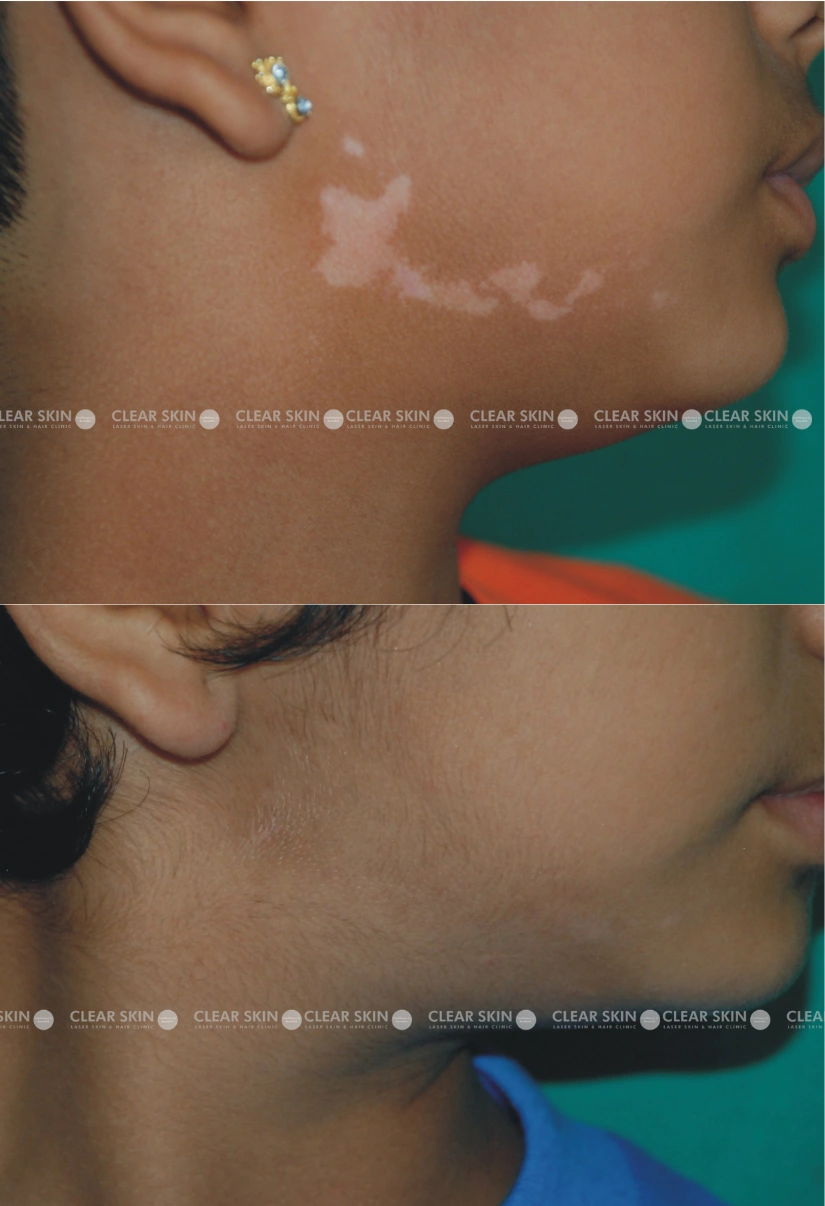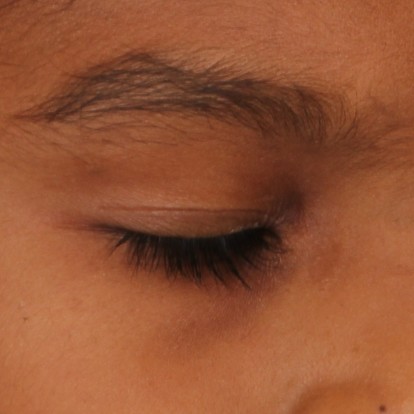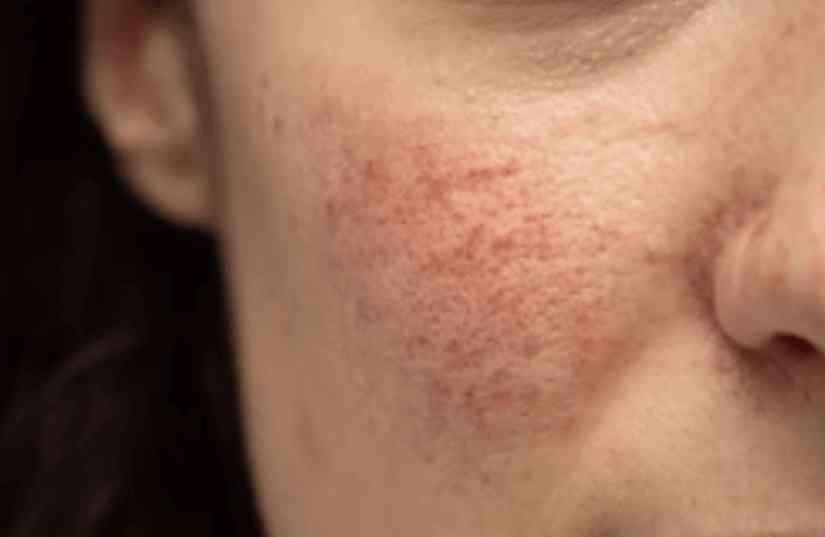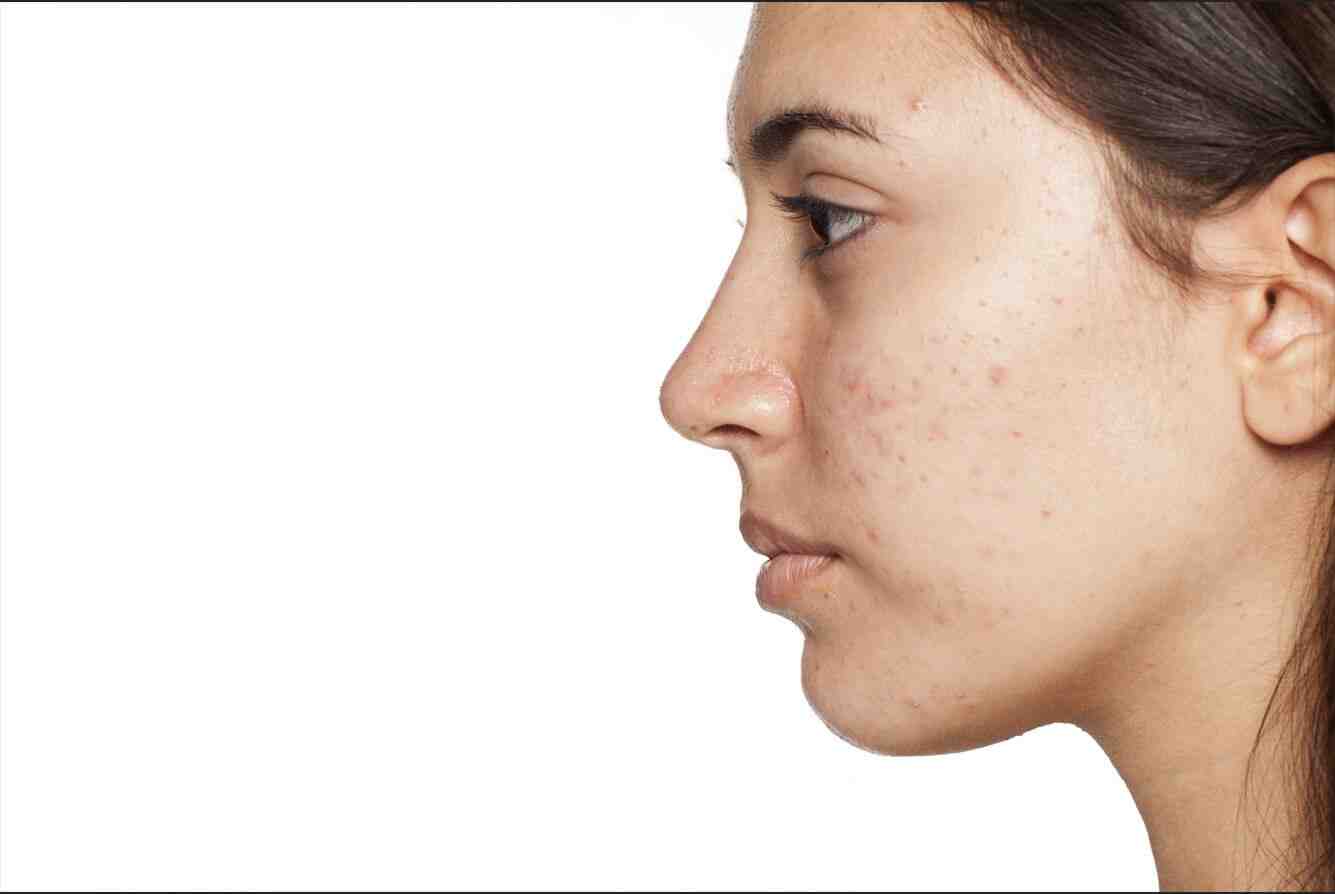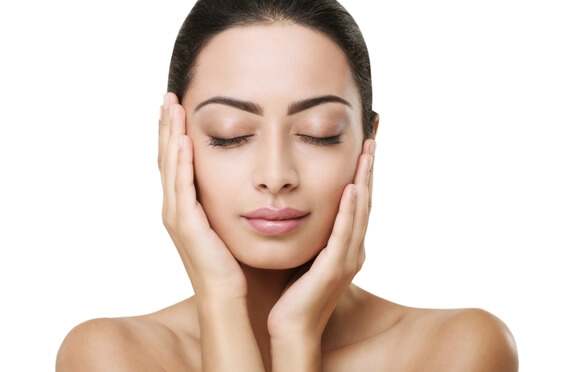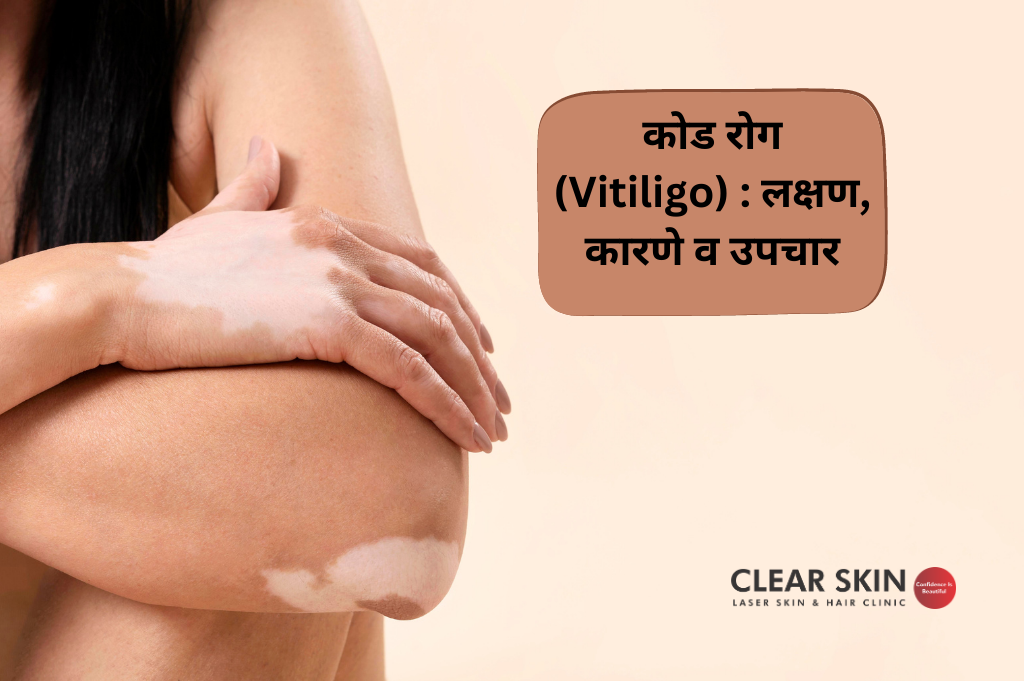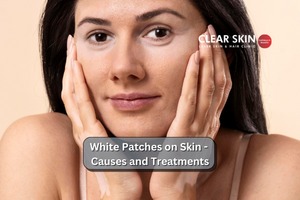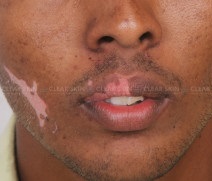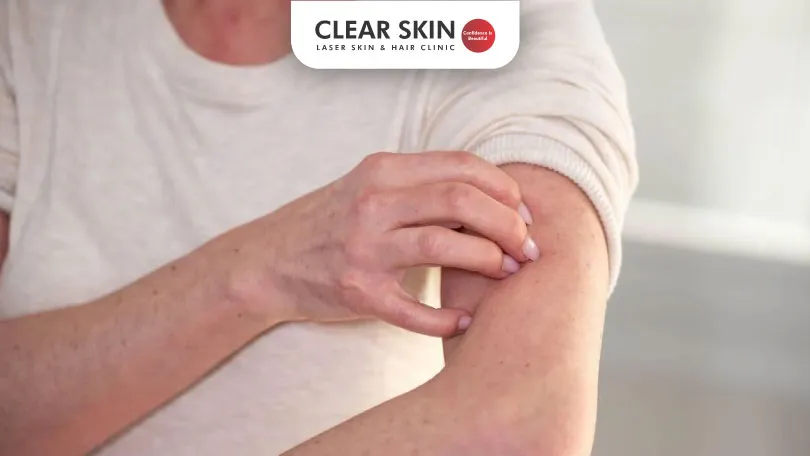What is Vitiligo
Vitiligo is a skin condition characterized by the loss of skin pigmentation. Vitiligo is a chronic vitiligo autoimmune disorder. Melanocytes are cells in the body producing melanin which is responsible for giving brown color to our skin. In vitiligo, pigment-producing cells of our body that is melanocytes are destroyed causing white patches to appear on the skin.
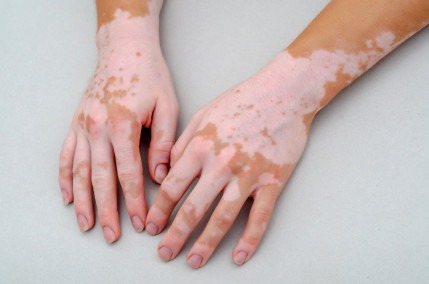
Table of Contents
Do's & Don'ts for Getting Vitiligo
Vitiligo is a non-contagious disease that is caused by autoantibodies. In fact, this causes the immune system to become overactive and destroy melanocytes. Therefore, this results in white patches on the skin. It may also happen because of genetic causes, injuries, exposure to harmful chemicals or neural causes. White patches that appear on the hands, feet, arms, face, and lips are the main sites. These patches do not itch or hurt.
Do's & Don'ts for Getting Vitiligo
DO: Apply moisturizers
DO: Use a broad-spectrum sunscreen.
DO: Take physical sun protection like scarves and umbrellas.
DON’T: Exposure to direct sunlight
DON’T: Use things made out of rubber, if you are sensitive to it.
DON’T: Eat unhealthy food
Affected areas are
- Around the mouth
- Elbows
- Ankles
- Knees
- Lower back
- Eyes
- Nostrils
- Navel
- Genitals
- Fingers and toe tips
- Rectal areas
- Back of the hands
- Lips
The most common type of vitiligo is the non-segmental vitiligo and is found in up to 90 percent of cases.
In the cases of non-segmental vitiligo, patches often appear equally on both sides of the body and are often symmetrical. In most of the cases, these vitiligo spots appear on parts of the skin which is commonly exposed to the sun, such as vitiligo on face, neck, and hands. However, patches can also appear in other areas.
Types of Vitiligo
- Generalized:
This type of multiple vitiligo patches all over the body. Moreover, it may occur in mirror images on the left and right sides of the body. - Acrofacial:
This type of vitiligo appears mostly on the face, especially around the nose and lips. - Mucosal:
The mucosal vitiligo appears mostly around the mucous membranes and lips and genital mucosa. - Universal:
This occurs in extremely rare cases. However, in such cases depigmentation covers most of the body. - Focal:
Scattered white patches may develop in a single, localized area. Moreover, this type of vitiligo autoimmune disease occurs in very young children. - Segmental: involvement of the body in a linear pattern.
Treatments of Vitiligo
Vitiligo is not curable. It is only treatable. Moreover, it is not even preventable. This is because it is an autoimmune condition. When you visit a skin specialist, you need to provide your entire medical history to your doctor. Your dermatologist will assess your skin to first rule out any other skin ailment.
The doctor may do the following things to assess whether you have Vitiligo or not:
- Use a special lamp known as Wood's lamp to determine whether you have vitiligo.
- Skin biopsy and blood draw - if required
Finally, your dermatologist will determine if you have Vitiligo. Further, he will also determine how extreme or severe your condition is. He will decide on a treatment plan accordingly.
In fact, before choosing a treatment method, a dermatologist generally takes a blood test to assess the health of the thyroid gland. This is because people who have vitiligo often have thyroid diseases. If the patient has a thyroid disease, treatment can successfully control it. The vitiligo treatments will take multiple sessions. In fact, the results will be visible over a period of 6-12 months.
The treatment approach for Vitiligo autoimmune disease can be either one of the below treatments alone or in combination based on site, number, and extent of disease.
The goals of vitiligo treatment are to control the spread of disease and to get back the loss of pigmentation of skin in the affected area.
Medical treatments
- These are oral medications and topical creams which help to control the activity and spread of disease and also in regaining the pigment in the skin.
- Various oral immunomodulatory agents are used such as minocycline, corticosteroids, azathioprine, etc.
- Topical agents such as corticosteroids, tacrolimus, pigment stimulating lotions can be used.
Phototherapy and laser treatments for vitiligo
- UV therapy- this therapy involves exposing the affected area to UVA or NBUVB light which helps to control the disease activity and also stimulates melanocytes in that area.
- UVA therapy is given after taking an oral medication called psoralen 1.5- 2 hours before treatment.
- NBUVB therapy is taken without any prior medications and is safe in children as well. In this, the patient is made to stand in an NBUVB chamber thus exposing all areas effectively to light.
- Multiple sessions of UV therapy are required at a frequency of 2-3 sessions per week.
Laser: This therapy involves the use of an excimer laser which is a focussed beam of NBUVB used for small patchy or localized involvement.
Surgery
Dermatologists will recommend vitiligo surgery when the disease is stable and not spreading or increasing. It also speeds up the process of repigmentation. Surgery is done in combination with other treatments like UV or laser therapy.
- Surgery involves taking graft/ skin from non affected covered areas of the body like thighs and transferring the skin or pigment-producing cells separated from that skin to the affected area. Though, these surgeries are simple and usually not associated with complications. If not done by a well-trained dermatologist, it can result in infection, scarring, a cobblestone appearance, spotty color, or even failure of the area to recolor.
- Various surgical modalities such as blister grafting, split skin thickness grafting, punch grafting, and melanocyte transfer are available, the selection of correct surgery differs from patient to patient.
Tattooing (Micropigmentation):
In this technique, the doctor uses a special surgical instrument to implant pigment into your skin. This procedure is most effective in and around the lips of people with darker complexions. However, it might get difficult to match skin color. If the procedure is not done properly, it can trigger another patch of vitiligo.
Depigmentation treatment
- This treatment involves the application of a depigmenting agent or laser to the unaffected areas of the skin. This area gradually lightens. Eventually, it blends with the discolored areas.
- it is done in patients with widespread vitiligo skin disease with only a few areas of pigmentation.
- This treatment may cause certain side effects. These may include redness, swelling, itching, and dry skin.
- However, depigmentation is permanent. Although, you'll always be sensitive to sunlight. As a result, you will have to take strict measures to protect yourself from the sun
These treatments will be recommended by an expert dermatologist in Pune.
Lifestyle Changes
It is important to also make some lifestyle changes.
- Sun protection: One must take complete protection from all kinds of UV light. Use a broad-spectrum, water-resistant sunscreen with an SPF 30. Apply sunscreen well. In fact, it is important to reapply it every three to four hours.
- Make sure you take physical protection too. This includes wearing a scarf, stole, long-sleeved clothing, using umbrellas.
- Don't get a tattoo ever, as if unstable, vitiligo can develop over that area.
Vitiligo isn’t a threatening disease. However, it affects one’s self-esteem. Many individuals feel ashamed or sad and distressed due to Vitiligo. It is even more frustrating because it recurs.
Moreover, if the condition is not letting you lead your life properly, it can become stressful. You need support to cope with it.
- Find a dermatologist who can truly help you deal with this condition.
- Learn how to identify vitiligo and be aware of everything you need to know about the condition. Make sure you are aware of the myths and don’t believe them.
- Communicate your feelings with your doctor.
- Confide in others. Join support groups to talk to people who are going through the same issue as you.
- Reach out for support from your loved ones.
- Don’t isolate yourself ever.
Causes of Vitiligo
Vitiligo autoimmune disease can spread due to factors like stress, skin trauma, hormonal changes, and sunburn.
Curing Vitiligo Naturally
While there is no known natural cure for vitiligo, some individuals explore remedies like turmeric or aloe vera. Consult a dermatologist for effective medical treatments.
If you have a skin problem or are looking for vitiligo treatment, don't hesitate to contact one of our top dermatologists in Pune. You can easily book an appointment at a nearby skin clinic by calling, +919584584111
Book Appointment
Vitiligo Treatments
Vitiligo Treatment: Success Stories
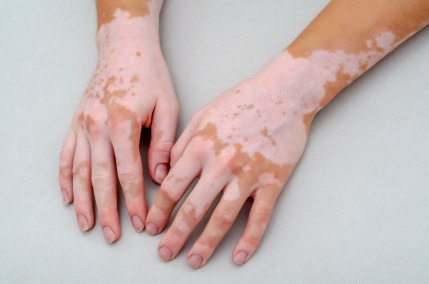
Vitiligo autoimmune disease is a condition characterized by the loss of pigment-producing cells in the skin called melanocytes. The melanin that gives our skin its brown color is produced by these cells. White patches of skin emerge as a result of the melanocytes being destroyed by the autoimmune reaction in vitiligo.
It works,
Says our Patients

Uday Patil
"Dr Shah seem like a very reasonable and knowledgeable doctor. She makes you comfortable with her patience and assertiveness. Long term effect of medication is seen, however on the first look she seems like a person to go for any skin related ailments. I have got good results with respect to vitiligo treatment."

Ravi Karande
"Dr. Shah listen to our problems patiently * She is polite and of friendly nature. She explained me whole treatment very well. I can see good results for my vitiligo"

Akshay Londhe
"I felt doctors and staff so co-operative. I am little bit worried about results so looking forward for it. thanks. "
Sangita Munde
"Very good interaction, solved all my doubts and treated very well. Very nice service and treatment, very nice staff , cooperative and helpful."
Ganesh Thakur
"I am visiting this clinic for vitiligo treatment. Doctors as well as all staff members are very nice. Excellent follow-up and quick remedies. Clinic is good and hygienic and well equiped. Treatment cost is bit high but worth it..."
Clear Skin Ultimate Guides
कोड रोग (Vitiligo) : लक्षण, कारणे व उपचार
कोड रोग, म्हणजेच vitiligo मध्ये त्वचेचा रंग जातो, ज्यामुळे, त्वचेवर पांढरे डाग दिसतात किंवा त्वचा पूर्णपणे पांढरी होते. ज्या पेशी त्वचेला रंग असण्यास कारणीभूत असतात, त्या गेल्यामुळे किंवा त्यांचे कार्य थांबल्यामुळे, कोड रोग उद्भवतो. ह्या रोगामद्धे, त्वचेवरील पांढरे डाग... Read MoreWhite Patches on Skin – Causes and Treatments
Lately, have you noticed small white dots on your skin? Ok, it could indicate a skin-related condition. But don’t let those dots scare you. Consult a dermatologist and know what is white dots on the skin, what’s causing them,... Read MoreVitiligo on lips
Hello sir, Thank you for your valuable inquiry. As per your question, there may exist a possibility of vitiligo, need to examine you personally to diagnose your problem. However, “Vitiligo “ or white patch is an autoimmune skin condition. In... Read MoreClear Skin Insights
Non-Surgical Breast Reduction: Approaches for Smaller Breasts
How to Cope With Itchy Skin After Laser Hair Removal?
How to Get Smaller Breasts in 1 Week: Effective Tips and Strategies
Hydra Facial Treatment, Procedure & Why it is popular? | Clear Skin, Pune
FAQs
- Epidermal melasma has a well-defined border & it is in dark brown color. This melasma responds very good to the line of treatment.
- Dermal Melasma, is located in the dermis of skin & has faded borders. This pigment is light brown or bluish in color. Being deeply seated, it responds poorly to the treatment.
- Mixed Melasma, the most commonly found as Light brown, dark brown, bluish pigmentation on the skin. This improves partially with the treatment.




